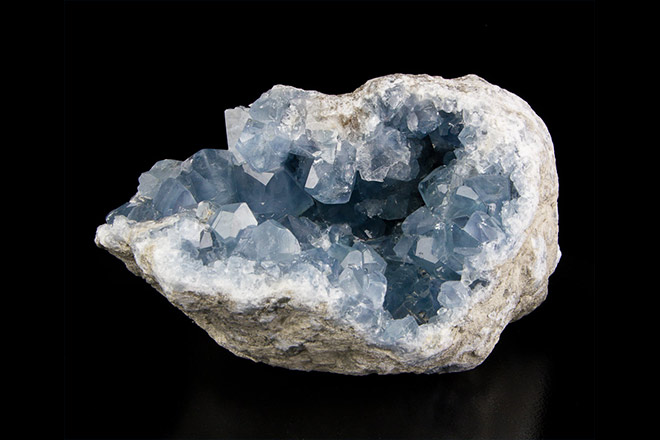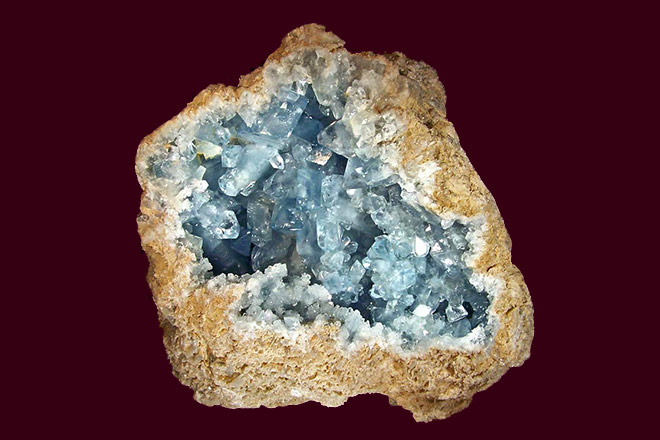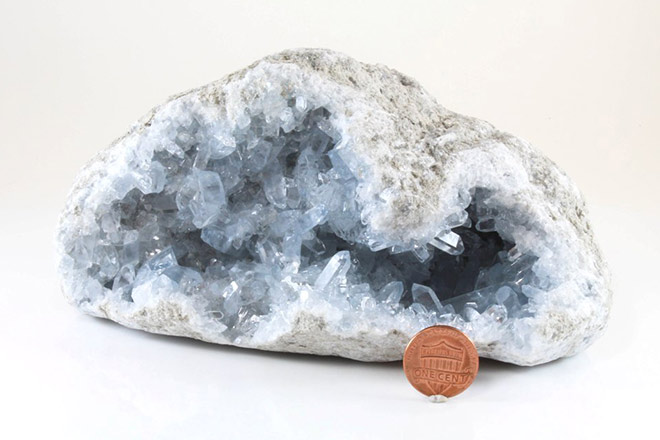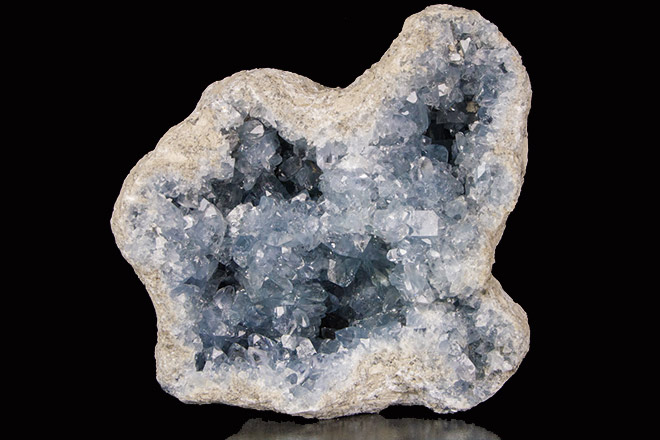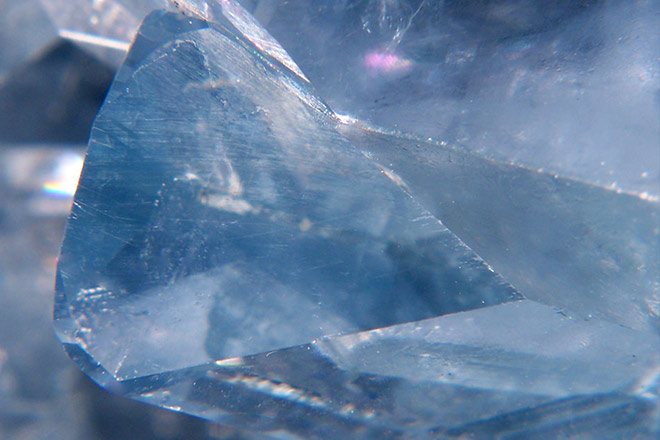
COMPOSITON:
Celestite has the same structure as Barite (BaSO4), and forms very similar crystals. Celestite also forms with other colorful minerals, making very nice combinations. Blue Celestite with bright yellow sulfur is one of the most famous colorful combinations of minerals. The ideal composition of celestite is: SrO 56.42 % SO3 43.58 %. The blue color of celestite has been attributed to the presence of minute amounts of gold.
ENVIRONMENT:
Celestite is only rarely an accessory mineral of ore veins which were formed from warm solutions. It is usually found in sedimentary rocks. The best occurrences are in cavities in sandstone or in limestone. The crystals usually form in the cavities and as geodes
CRYSTAL DESCRIPTION:
Crystals can be bladed and show two large pinacoid faces top and bottom with small prism faces forming angles on every side. There are many variations, but the flattened blades and tabular crystals are the most common. If the pinacoid faces become diminished or are absent, the resulting prismatic crystal has a rhombic cross section. This habit is rather common in specimens from Madagascar. Celestite can also be nodular, fibrous or granular
TESTS:The flame test works best to distinguish celestite from barites, that may be of a similar color.
If the flame is a pale green, it is barite, but if the flame is red, it is celestite
